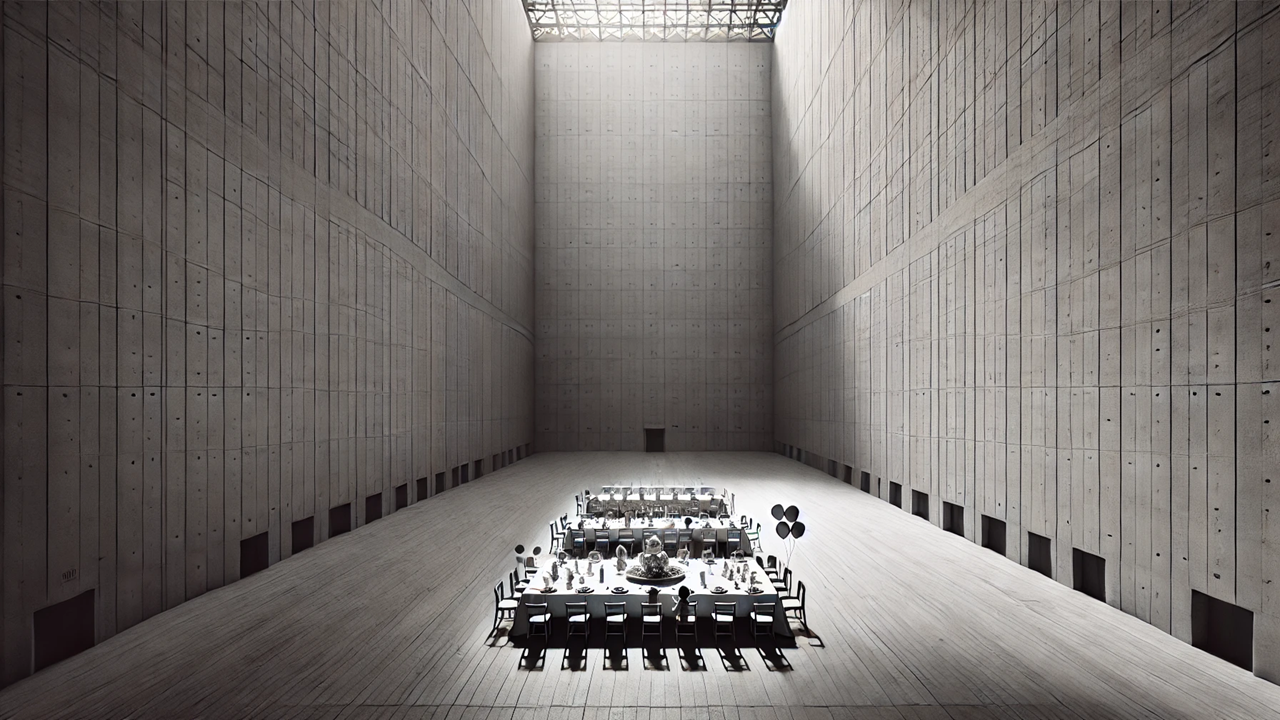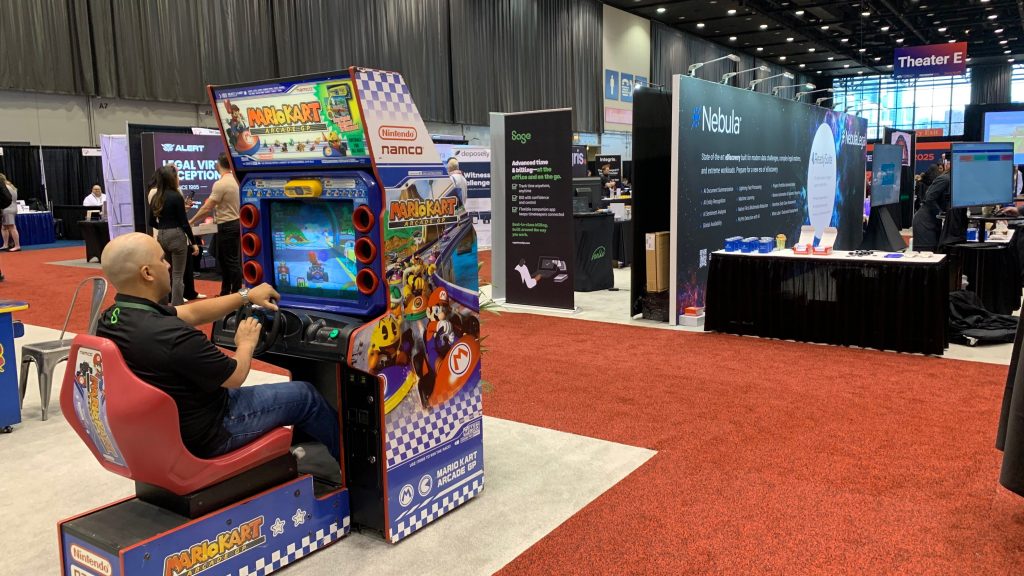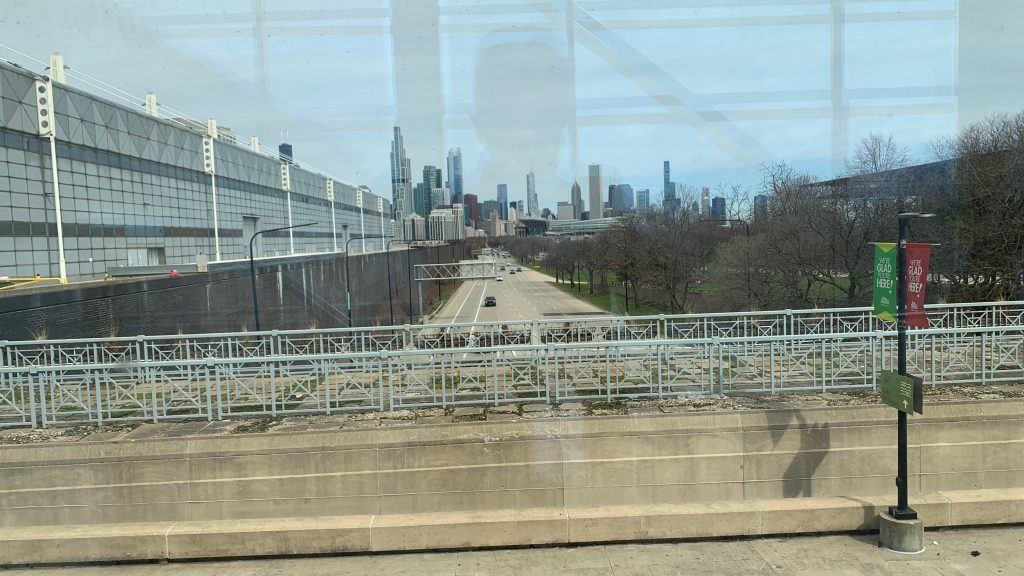“April is the cruellist month,” T.S. Eliot wrote in his classic poem, “The Waste Land,” and the same might have been said for the attendees navigating a waste land of a different sort last week – the vast empty waste land of the McCormick Convention Center in Chicago, where the American Bar Association’s Techshow moved this year from its former venue, the Hyatt Regency Chicago.
Celebrating its 40th anniversary this year, Techshow is the second-oldest legal technology conference still running, after only Legalweek, which started in 1982. Even after 40 years, and even at a time when we now have a glut of legal technology conferences, Techshow remains one of the best of the lot in its programming, especially for lawyers and legal professionals in smaller firms.
In fact, if I were to grade this year’s Techshow solely on its programming, I would give it a very high mark. In recent years, Techshow’s programming has grown stronger than ever, and several people remarked to me that they thought this year’s line-up of speakers and panels exceeded their expectations.
That is notable because there had been a time when Techshow had come to be perceived – even by some within the ABA – as stale. It was perceived as simply rounding up the usual suspects every year to fill out its faculty. (As I reported in a blog post a decade ago, after crunching the numbers, that was not actually true.) It had also been perceived as in need of a “reimagining” for failing to have kept pace with the vitality and content of newer legal tech conferences, to the point where a task force was briefly convened in 2018 for that very purpose.
But as legal technology has evolved dramatically in recent years, accelerated by the pandemic and generative AI, the programming at Techshow has as well, achieving a strong balance between the practical and the cutting-edge with programs that appeal to both first-timers and veterans.
On the practical side were programs on marketing, ethics, trial presentation, email management, trust accounting, Microsoft Word formatting, and cybersecurity.
On the cutting-edge side were a variety of programs on the past, present and future of generative AI, as well as programs on the regulation of law practice, virtual and remote lawyering, the use of augmented reality tools in law practice, evolving client expectations, and the future of law practice in years to come.
All of this programming was presented this year by a roster of faculty members who are among the best in their respective areas of expertise. They included practicing lawyers, law practice consultants, bar association practice management advisors, legal tech vendors, law school faculty, judges and judicial administrators, and even a legal tech journalist or two.
Improvements could still have been made in faculty diversity. Going only by the speakers listed on the Techshow website, of the 82 total speakers, 32 were women, or about 39 percent. (Some listed speakers were replaced for various reasons, not least among them the nightmarish travel conditions on the first day of the conference that virtually shut down Chicago’s O’Hare airport.)
So, in its 40th year, Techshow offered up a menu of 3.5 days of programming that was diverse, educational, practical and thought-provoking, all presented by a top-notch faculty of legal tech’s best and brightest.
The Waste Land
Unfortunately, however, the celebration of Techshow’s 40th anniversary was muted by gnawing growing pains, brought on by the conference’s move to the McCormick Convention Center.
I should note here that the planning of Techshow is bifurcated. A planning board of volunteers is responsible for the programming and speakers, led this year by cochairs Steve Embry, author of TechLaw Crossroads, and Julie Bays, practice management advisor at the Oklahoma Bar Association. But the choice of location is that of the ABA and the event management group it contracts with. So if, like me, you did not like the location, don’t blame the planning board, which did its job well.
That said, the problems this year started with the McCormick’s location. Whereas Techshow’s prior location at the Hyatt Regency Chicago put it in the very heart of Chicago’s epicenter, the McCormick complex is to the city’s far south, just beyond the aptly named Prairie District. This was not a location amenable to exploring the city, and some attendees who were first-time visitors to Chicago told me they were disappointed to learn how far they were from the city’s more vibrant and touristy areas.
But even apart from its location, the McCormick Center itself seemed a horrible fit for a conference that had long maintained a sense of intimacy. It is an absolutely massive building with 50-foot high ceilings, 2.6 million square feet of exhibit space, and 173 meeting rooms providing 600,000 square feet of event space. Dropped into this space for the first time, this 40-year-old conference seemed like a bewildered child, lost in a land of giants, unable to get its bearings.
They say you sometimes have to take a step backward to move forward, and with steady growth over the years and record attendance of some 2,000 people this year, it was perhaps time for Techshow to find a new and larger home. From what I can decipher, it seems the actual reason for the move was not even size, but scheduling, as the Hyatt was unable to accommodate the dates Techshow’s planners wanted.
But this year, it felt as if the soul of Techshow – which is always one of my favorite legal tech conferences to attend and one of the absolute best for smaller firm lawyers and legal professionals – was lost in the ginormity of the venue. With Techshow committed to this location for another two years, we can only hope that, having notched its first year in this new home, it can make better use of the space next time around.
It is important to emphasize that with a 40-year-old conference comes a strong sense of community and continuity. There were people attending this year who attended the first year, and I know of at least one person who has attended all 40 years. That means that you go to Techshow not just for the programs, but for the people – to reconnect with old friends and make new friends.
Over the years, even as Techshow has moved its location several times from one Chicago hotel to another, it always maintained a strong center of gravity – that one spot in the conference venue where attendees naturally congregated.
At the Hyatt, its last location, that was the registration area, where you passed through to get your badge, attend the keynote, go to sessions, grab a box lunch, and enter the exhibit hall. The registration area was always teeming with people. Stand there long enough, and you’d see everyone attending the show.
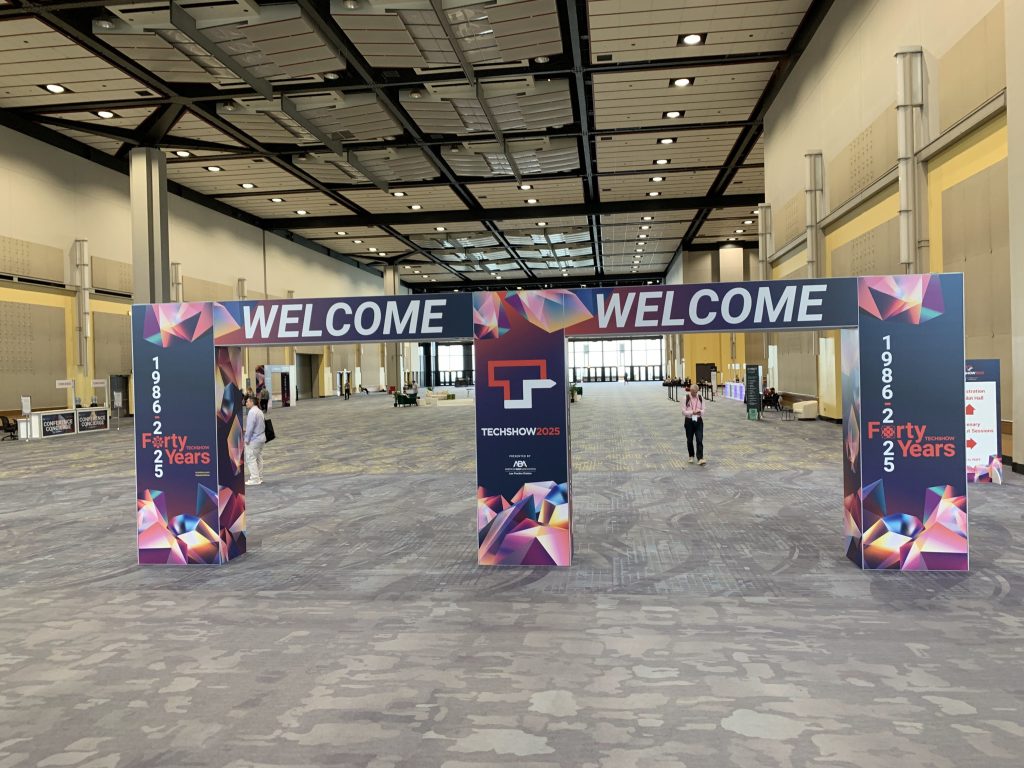
Even though attendance was at a record high, you wouldn’t know it as you entered the central registration area, where the registration desk was on the right and the exhibit hall entrance was on the left. Compare this image to the AI-generated image featured above.
But at McCormick, the central area was a cavernous space that seemed almost devoid of people. As you entered into this space, the view was of a waste land – a broad empty space with a tiny registration booth on one side and the exhibit hall entrance way over on the other side, and only a handful of people to be seen in the largely empty terrain in between.
In fact, despite this year’s record attendance, I heard several first-time attendees express surprise at how sparse was the attendance. It wasn’t sparse, at least not by the numbers, but visually it certainly seemed to be so. Honestly, it was not clear where all the people were, but they certainly were not mingling with each other.
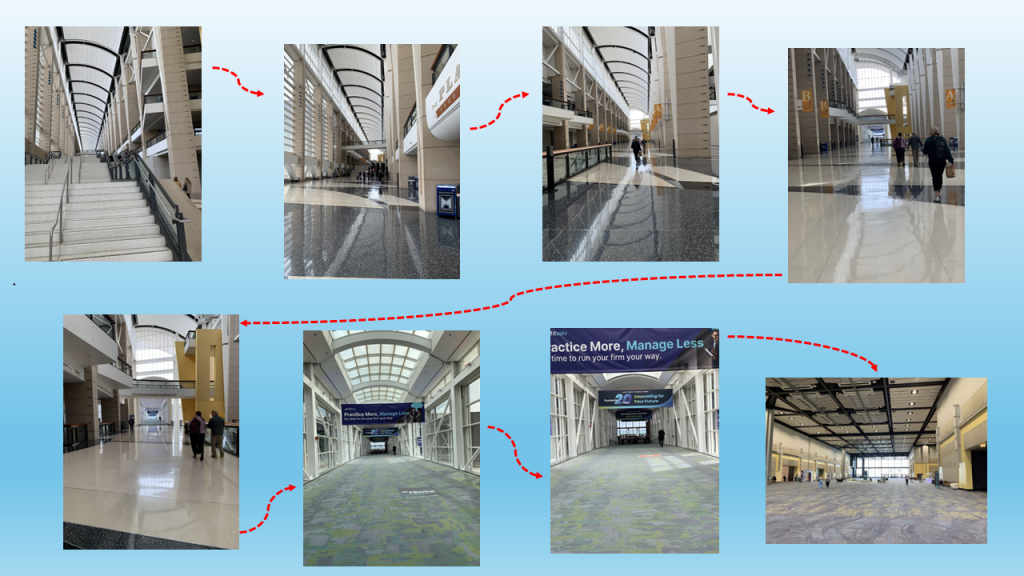
The trek from the hotel to the conference area felt long. I clocked it at 6.5 minutes, but I walk fairly briskly.
To make matters worse, to get to this waste land, one had to walk what seemed a very long way from the hotel to the conference. God forbid you should forget something in your room, because to go back to the hotel and back to the conference was easily a half-hour walk. I timed it, and from the archway that marked the entrance to the conference area back through the McCormick to the doors that led into the hotel took me six minutes and 30 seconds – and I walk at a pretty brisk pace. I don’t know how people with mobility issues were able to manage it.
Of course, from adversity comes opportunity, and already several enterprising vendors are hatching plans to sponsor golf carts or electric scooters at next year’s show, although the need to navigate several escalators along the way would allow those to go only so far.
Session rooms could also be hard to find, spread out over several floors and all off in an area not immediately obvious from the main registration area. That said, once you figured out the lay of the land, the session rooms were all relatively close to each other and easy enough to move between.
From the people I spoke to, thoughts on the exhibit hall were mixed. Vendors and attendees all seemed to like the space as roomier and brighter and generally better suited to exhibiting than the former space at the Hyatt. That said, several exhibitors complained that the space was too large and the booths too spread out.
But the biggest complaint I heard from vendors about the exhibit hall was the lack of traffic. The exhibit hall was by itself way across that vast waste land of the registration area, and on the complete opposite side from the program rooms. There was nothing to draw attendees to or through the exhibit space except to see the exhibits or to grab the daily free box lunch, and many a vendor griped to me that they were not getting traffic comparable to what they had seen in prior years.
Now It’s Legalweek’s Turn
Coincidentally, the move of this second-oldest legal tech conference to the McCormick Convention Center comes just after it was announced that the oldest legal tech conference, Legalweek, will next year move from its longtime home in the New York Hilton across Manhattan to the Javits Convention Center, a 3.3 million square foot behemoth on the city’s far west side.
Will Legalweek also suffer growing pains? No doubt it will. Maybe all these growing pains are good things, in that they mark a stage at which, even after 40 years, legal tech is finally reaching maturity and getting too big for its britches.
I am hopeful that Techshow’s organizers will learn from this year’s shortcomings and make better use of the McCormick venue next year.
But as I have written about other conferences in the past, organizers need to remember that people attend a conference not just for the programming – they can get a lot of that online. They attend for the networking and the community and the overall experience of being with like-minded colleagues. They attend for the serendipity of running into old friends and making new ones.
In the waste land of the McCormick Center, serendipity was scarce.
 Robert Ambrogi Blog
Robert Ambrogi Blog